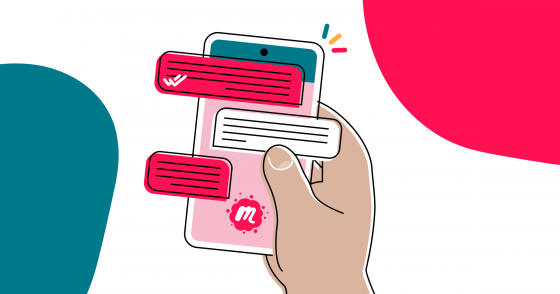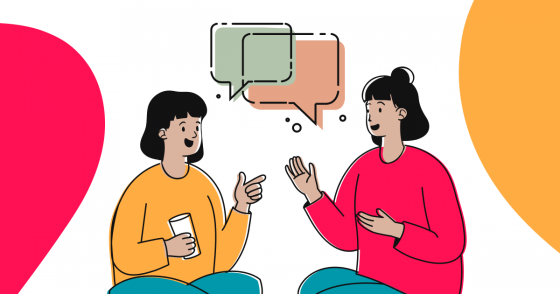If making new friends is the destination, your introduction is the road that will take you there. But even for the more extroverted among us, introductions can be daunting.
Wondering about what to say and how to say it may lead to some over-preparation anxiety. Plus you could end up coming off as too robotic if you try to precisely rehearse your introductions à la Nathan Fielder. On the other hand, it often seems terribly unhelpful when people’s only advice is to “be yourself.”
What’s best is a middle ground where you can feel confident and prepared for a new social setting, without taking spontaneity out of the equation. So check out the following five tips that will make introducing yourself to new people both easier and more natural.
1. Think about your audience
The first step of your introduction should occur before you even arrive. You’re not going to write yourself a script, but you are going to consider the kind of event you’re attending, and how that might influence your small talk. The way you introduce yourself should probably be a bit different when you’re going to a support group versus a pickup soccer game.
Think about what drew you to this event and what your goals are. For example, it would be entirely appropriate to say, “I’m excited to make some new friends,” at a group bar crawl for newcomers to your city. But that same sentiment might not be a great part of your introduction at a business conference, where you would be better served talking about career specifics.
2. Keep it short and simple
Introductions aren’t meant to drag on. That doesn’t mean they can’t lead to more in-depth conversation with someone you just met—just avoid oversharing and commanding too much of someone’s time right off the bat.
Always start by mentioning your name and making a point to learn the other person’s name. You could add a simple observation about the event turnout, the food and drink, anything really. The point isn’t to say something amazing and meaningful. The point is that you’re making a casual connection, and demonstrating pleasant social skills.
If it’s your first time attending an event with a group that meets regularly, you should definitely mention that fact. It’s an easy conversation starter, and invites the other person to share about their own experience.

3. Ask questions
Remember that introductions are a two-way street. Don’t block traffic by only talking about yourself—the other people need space to introduce themselves, too.
Asking basic questions is the best way to get someone chatting. Other than asking somebody’s name, the most fundamental question is probably, “What brings you here?” After you and your conversation partner have covered the basics, you can get a little more in-depth.
At this early stage of getting to know someone, you can just stick to the event topic. For example, if you’re at a group salsa lesson, you could ask someone how long they’ve been dancing, what they like about salsa, what other dance styles they’re into, where their favorite dance spots are, and more. Don’t let yourself get thrown off track—if they say they’ve never danced salsa before, change gears and ask why they became interested in it, how they found out about the event, and so on.
A general rule of thumb is to keep your questions light. Don’t begin a brand new acquaintance by asking what someone’s biggest regrets in life are. By that same token, try not to overshare about your own life too soon.
4. Find common ground
Identifying what you have in common with others is a surefire way to connect. Luckily, you already have something in common: you’re at the event! From there, if the conversation is feeling good and light and fun, try to discover some common interests in music, sports, movies, education, work, food, and more.
5. Put yourself out there
Introductions, like any other social skill, are easier to master with time and practice. If you’re a real beginner, try attending an event and set a goal to introduce yourself to just one person. That simple effort will take you far. As you develop your small talk at future events, challenge yourself to make at least five introductions.
Meetup events are the perfect low-stress place to work on introductions because they are specifically designed for new people to meet each other! All you have to do is follow your interests: there are plenty of amazing events to check out, from robotics demonstrations and hands-on experiences in New York City to birdwatching in a Chicago forest preserve.
You can even create your own Meetup group and invite others to join you in an activity of your choosing. As a host, try organizing fun and simple icebreakers to get the conversation started at your first event.
This is the “wpengine” admin user that our staff uses to gain access to your admin area to provide support and troubleshooting. It can only be accessed by a button in our secure log that auto generates a password and dumps that password after the staff member has logged in. We have taken extreme measures to ensure that our own user is not going to be misused to harm any of our clients sites.
Last modified on October 18, 2023










